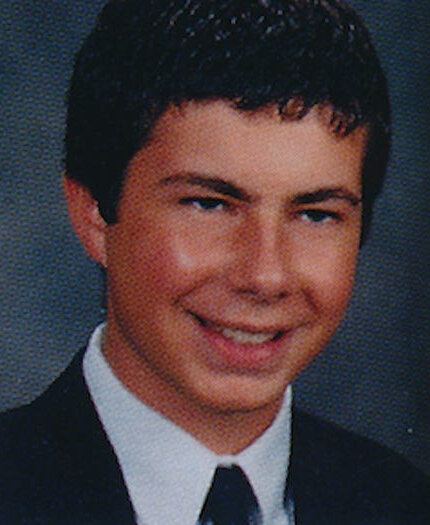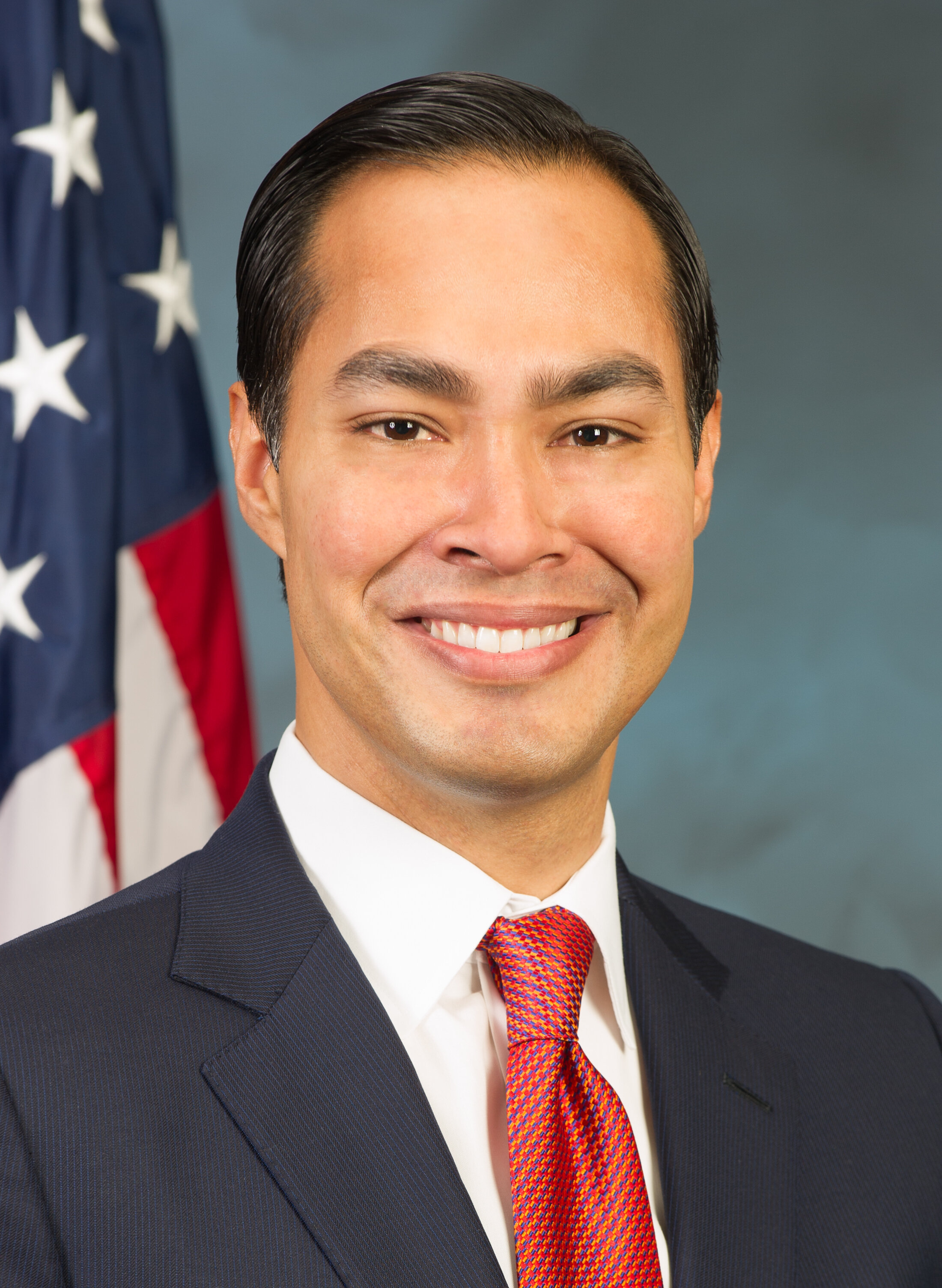High school photos of Beto O'Rourke, Julian Castro, Eric Swalwell and Pete Buttigieg.
April 9, 2020 by David Silverberg.
Updated 10:45 am with additional concluding analysis.
With the withdrawal yesterday of Sen. Bernie Sanders (I-Vt.), the Democratic presidential nomination is now in former Vice President Joe Biden’s hands; all that remains is an official party coronation.
But amidst the excitement and heartbreak of the Democratic presidential primaries there’s another story that needs to be told. It may be the biggest to come out of the presidential campaign to date—and the most overlooked and hidden.
The coming presidential battle between Joe Biden and Donald Trump is probably the last struggle of Baby Boomers over political power. Donald Trump is 73 and Joe Biden is 77. Sanders is 78 and, just to add them to the mix, Michael Bloomberg is 78 and Elizabeth Warren is 70.
But amidst the brawling debates and the stabbing sound bites, something else happened: a new generation of Democratic leaders emerged and these are the ones who will ultimately lead the nation in the years to come. They were all on display in the first rush of candidates to seek the presidential mantle. None of them succeeded—but they stepped into the limelight, no matter how briefly, and we all got a first look at them.
If the United States remains a democracy, continues to operate under its Constitution and has regularly scheduled elections as in the past—things that can’t be taken for granted if this president remains in office—then these under-50 Democratic leaders will be on the political stage for a long time to come. All are elected officials, all are now veterans of a presidential campaign and all are likely to be back in one form or another. It gives the Democrats a deep bench.
They’re worth looking at, each in turn and examining their electoral records, their prospects and—subjectively—what they might do next to further their political careers.
So, from oldest to youngest:
Beto O’Rourke
04-08-20 Beto_O'Rourke,_Official_portrait,_113th_Congress
Age: 47 years old, born September 26, 1972.
Education: Columbia University
Previous offices: El Paso City Council, 2005 to 2011; won US House Representative, Texas 16th Congressional District with 65 percent of the vote and served 6 years, 2013 to 2019.
In 2018 O’Rourke ran against Sen. Ted Cruz (R-Texas) and came within 3 percentage points of defeating him, raising $80 million in the process, the most ever raised by a Senate candidate to that time. He also created enormous enthusiasm for his candidacy, appearing as a fresh, exciting candidate who appealed to younger voters
O’Rourke announced his candidacy for president on March 14, 2019. He never inspired the enthusiasm he had in his Senate race and he announced termination of his campaign on Nov. 1, 2019, well before the first primaries and caucuses. On Super Tuesday, March 3, he briefly made headlines when he dramatically endorsed former Vice President Joe Biden for president.
Next steps: Texas Sen. John Cornyn (R) is up for re-election this year but last February O’Rourke flatly decided not to challenge him in order to concentrate on his presidential run. The next possible move is the Texas governorship, which opens in 2022. The current governor, Republican Gregg Abbott, could run for a third term and there are numerous other potential Democratic candidates (more below). When O’Rourke dropped his presidential bid there was talk among the punditry and party activists about his serving as Biden’s vice president, though Biden announced that a woman would be his running mate.
Analysis: If O’Rourke doesn’t go into the executive branch he needs to win the next election he enters to stay a credible prospect for higher electoral office.
Julian Castro
04-08-20 Julián_Castro's_Official_HUD_Portrait
Age: 45 years old, born Sept. 16, 1974
Education: Stanford University, Harvard Law School
Previous offices: San Antonio City Council, 2000 to 2005 (at 26, the youngest person ever to hold that position); unsuccessful run for mayor of San Antonio, Texas, 2005; in 2008 elected mayor with 56 percent of the vote and served 2009 to 2014; US Secretary of Housing and Urban Development from 2014 to 2017 under President Barack Obama. He also gave the keynote address at the 2012 Democratic National Convention and was considered as a vice presidential running mate for Hillary Clinton.
Castro announced his run for president on Jan. 12, 2019. Although he participated in several debates, his campaign never caught fire and he dropped out almost exactly a year after he started, on Jan. 2, 2020. He endorsed Sen. Elizabeth Warren (D-Mass.) four days later.
Next steps: If he seeks Texas office, Castro’s way forward could run into Beto O’Rourke as a rival for the Texas governorship in 2022 or he could take on Sen. Ted Cruz in 2024. Until Joe Biden announced that he would be selecting a woman as running mate, Castro was seriously considered as a vice presidential candidate. Depending on the outcome of the 2020 election, he could try another presidential run in 2024.
Analysis: With his past service in the executive branch, Castro is a real possibility for a Cabinet position in a Democratic administration. Clearly a politician of both electoral and administrative ability with appeal to the Hispanic community, he has numerous options and roads open to him.
Eric Swalwell
04-08-20 Eric_Swalwell_114th_official_photo
Age: 39, born November 16, 1980
Education: Campbell University, NC, transferred in junior year to University of Maryland, College Park, BA; University of Maryland, Baltimore, JD
Previous offices: Alameda County deputy district attorney; city council, Dublin, Calif., 2010; US representative California 15th Congressional District, starting 2012.
Swalwell announced his candidacy on April 8, 2019 and made addressing gun violence the centerpiece of his campaign. His most prominent moment came in the first presidential debate when he observed that he was six years old when Joe Biden spoke of passing the torch to a new generation. His presidential campaign never caught fire, though, and he withdrew in July, before he could be disqualified for the next round of presidential debates.
Next steps: A logical next step would be for Swalwell to pursue a US Senate seat. However, both of California’s Senate seats are held by fellow Democrats. The seat of Kamala Harris, who also ran for president, is up for election in 2022. Depending on the outcome of the 2020 election, Harris could either enter a Democratic administration or seek re-election in 2022. Sen. Dianne Feinstein, who has held her seat since 1992, may retire when her term is up in 2024. A run for governor in 2022 seems a stretch since current governor Gavin Newsom is a Democrat. If he seeks a second term it would be difficult for Swalwell to unseat him.
Alternatively, Swalwell could continue to build his career in the House of Representatives. He has graduated to increasingly important roles and committee assignments in his three terms to date as a representative and there may be party leadership openings in the future. He defeated two Democratic primary challengers in his congressional district on March 3 and is in a strong position to win re-election in November.
Though Swalwell did not go far as a presidential candidate, he appeared on the national stage as an intelligent and articulate politician. In the past he has proven an innovative campaigner. As a millennial himself, he made outreach to his generation a central pillar of his presidential campaign and that may pay dividends in the future. In 2015 he founded the Future Forum Political Action Committee, aimed at millennials and their issues. It raised more than $542,000 during the 2017-2018 election cycle — a significant jump from the $62,400 it raised in the 2016 election cycle, according to the Center for Public Integrity.
Whatever he does in the future, Swalwell is definitely a Democrat to keep an eye on.
Pete Buttigieg
04-08-20 Pete_Buttigieg_by_Gage_Skidmore
Age: 38, born January 19, 1982
Education: Harvard University, BA, magna cum laude; Rhodes Scholar; Pembroke College, Oxford, UK, MA with a first in politics, philosophy and economics.
Military service: Joined US Naval Reserve, 2009 as ensign, promoted to lieutenant; 2014 deployment to Afghanistan, recipient Joint Service Commendation Medal.
Previous office: Mayor, South Bend, Indiana 2011-Jan. 1, 2020.
Analysis: Of all the candidates under 50, Buttigieg emerged as the media standout. He won the Iowa caucuses after a murky primary process and participated in numerous debates where he came across as very intelligent and articulate. His campaign lasted longest and for a time he seemed to have a real shot at the nomination. His options seem limitless.
Next steps: It’s doubtful that Buttigieg would have much of a political career in very conservative Indiana—then again, just becoming mayor of South Bend and going as far as he did as a presidential candidate seemed improbable. Both current Indiana senators are Republicans and their seats are not up until 2023 and 2025 respectively. The governor, Eric Holcomb, who took over when Mike Pence assumed the vice presidency, is up in 2020, but given his concentration on the presidency, Buttigieg showed no interest in pursuing the office and Indiana pundits think he would have a difficult time if he did.
Buttigieg might have a variety of possible positions in a Joe Biden administration or he could pursue a Democratic Party position.
Buttigieg came out as gay in 2015 and is married to Chasten Glezman, a sexual orientation that will certainly sway some voters against him. However, it didn’t seem to affect his presidential run much and it was never cited as a major issue by the other candidates—although it might have been had he stayed the front runner.
Of all the presidential candidates under 50 who ran in 2019 and 2020, Buttigieg’s star shown brightest. If the Democrats win the presidency and he stays healthy and politically involved, there’s no telling where Buttigieg might go.
* * *
Another Democratic presidential candidate was Rep. Tulsi Gabbard, 38, of Hawaii's 2nd Congressional District. A three-term representative with military service, Gabbard showed promise of political leadership despite some controversial actions, like meeting with Syria's President Bashar al Assad.
But Gabbard really took herself out of the running for Democratic leadership when she voted "present" on the impeachment vote of President Donald Trump on Dec. 19, 2019, saying she could not in good conscience vote for either side. The animosity resulting from that stance has likely doomed any further advancement in Democratic Party politics. Gabbard also announced that she would not seek re-election to her congressional seat in order to pursue the presidency, leaving her without elected office.
The other bright young star in the Democratic firmament is Rep. Alexandria Ocasio-Cortez, 30, of New York's 14th Congressional District. AOC, as she is widely known, will first be eligible to run for president in the 2028 presidential election. Before she does that, however, she must win re-election this year to a second term in her home district.







